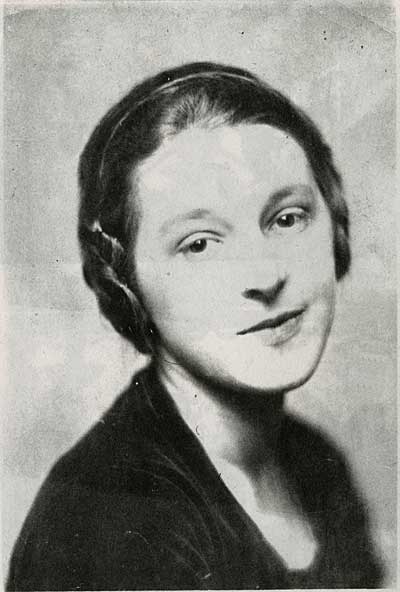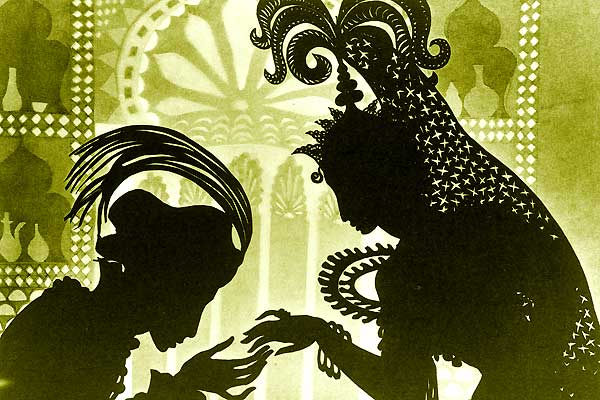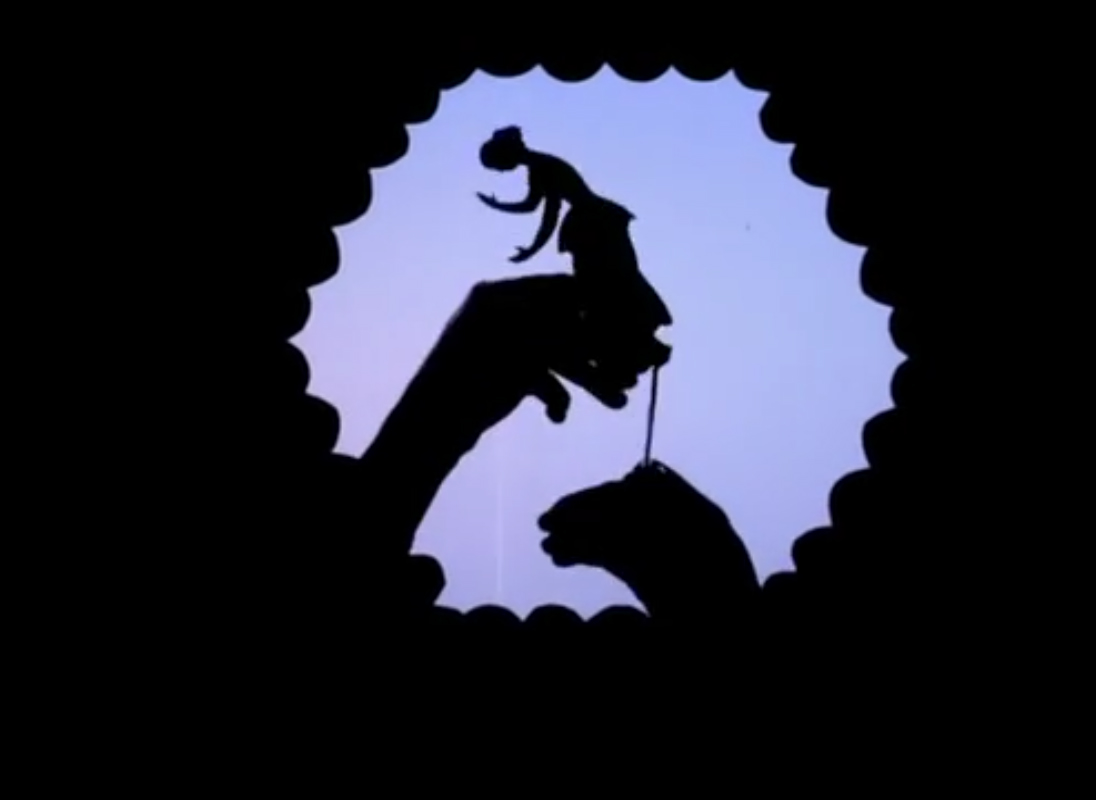Women's History Month: On the master animator Lotte Reiniger
 Thursday, March 13, 2014 at 9:30PM
Thursday, March 13, 2014 at 9:30PM  Tim here, contributing to our ongoing celebration of Women’s History Month with a look at one of the truly pioneering artists in the history of animation. And Lotte Reiniger isn’t important simply because she was a woman in a medium that has done such a good job over the years at remaining a boys club. The work she did, silhouette animation based on the shadow puppet theater of East Asia, remains as unique in the 2010s as when she created it over 40-year career beginning in Germany in the 20s, and she created, largely by herself, the first entirely animated feature that still exists (at least two Argentinean films from the 1910s are now lost), eleven years before Disney’s Snow White and the Seven Dwarfs. Puts a little bit of added context to that company’s half-proud attempt to declare themselves progressive because, in 2013, they finally hired a female co-director for one of their projects with Frozen.
Tim here, contributing to our ongoing celebration of Women’s History Month with a look at one of the truly pioneering artists in the history of animation. And Lotte Reiniger isn’t important simply because she was a woman in a medium that has done such a good job over the years at remaining a boys club. The work she did, silhouette animation based on the shadow puppet theater of East Asia, remains as unique in the 2010s as when she created it over 40-year career beginning in Germany in the 20s, and she created, largely by herself, the first entirely animated feature that still exists (at least two Argentinean films from the 1910s are now lost), eleven years before Disney’s Snow White and the Seven Dwarfs. Puts a little bit of added context to that company’s half-proud attempt to declare themselves progressive because, in 2013, they finally hired a female co-director for one of their projects with Frozen.
That film was The Adventures of Prince Achmed, which remains one of the easiest of Reiniger’s projects to see, thanks to a full restoration in the late 1990s. It’s a basic riff on themes from the Arabian Nights – a wicked magician, a brave prince with a flying horse, a couple of helpless women to be rescued – almost hopelessly square and hokey in its embrace of every fantasy adventure cliché you could dream up. But then, the point was never really about the story. The point was things like this:

It’s a supremely gorgeous film, with all sorts of layered, multi-shaded frames like that throughout its 65-minute running time. And as beautiful as it is to look at it in a still image, it’s that much more impressive when it’s moving, and the wide gap between this style and anything else you might be used to really insists upon itself. It borders on abstraction, demanding a certain willingness from the viewer to meet the film halfway with a willingness to interpret the images rather than simply have them delivered to us. Reiniger considered herself an entertainer, not an artist, and most of her films are based on folklore and fairy tales; basically, she’s an alt-universe Walt Disney, heading in exactly the opposite direction of his insistence on realism and physical plausibility, but trying to do the same things.
Every bit as impressive as the final results was the technique it took to get there. All of the characters seen in Reiniger’s films were cut from black paper, by hand, with scissors; her 1922 short version of Cinderella even opens with an animated representation of her own hands trimming her protagonist from a solid black rectangle.

There’s a documentary from 1971 showcasing Reiniger’s creative process, in which we can see her snipping out perfectly-formed faces in just a short burst of speed; it’s impressive by any and all reasonable standards, but even more so when you realise that the woman whose hands are flying all around that virtually blank slip of paper is 72, and she has enough dexterity to shame someone a third of her age. Considering how much her finished work insists upon its own craftsmanship, foregrounding technique over illusion, it’s special and tremendously rewarding to see just how flawless and fantastic that technique was. Perhaps Reiniger only ever wished to make simply illustrated fairy tales, but the astonishing beauty of her work and its uniqueness within the history of cinema is enough to make her a true artist by any definition I’d care to use. Simply put, she’s one of the greatest and most groundbreaking female directors that most people have unfairly never heard of.
The 1922 Cinderella in its entirety.
Also check out her 1935 short Papageno (taken from Mozart’s opera The Magic Flute) and her 1955 Hansel and Gretel, among other films available on YouTube.



Reader Comments (3)
I hadn't realised it was directed by a woman! For that reason alone, I'm wondering why this movie isn't more famous.
It looks absolutely gorgeous. Though I have to confess, even at height of my hardcore silent movie phase, I didn't manage to see it (I'd never heard of it).
I'll seek it out
Thanks for writing about this! I love "Prince Achmed", I love Lotte Reiniger and I love non-traditional takes on fairy tales! There's this great book by Jack Zipes, called "The Enchanted Screen - The Unknown History of Fairy-Tale Films", have you heard of it? That's where I learned about Lotte and other great animators and filmmakers who worked with fairy tales and kid stories. The author's vision on Disney is maybe a bit harsh (though understandable), but once you get pass that, it's a lovely book. Check it out, you guys might like it too!
@goran - Don't waste your time borrowing or renting "Prince Achmed." Just Buy it today. It's incredible, and you will want to watch it more than once. It's also funny and occasionally sexy, of all things.